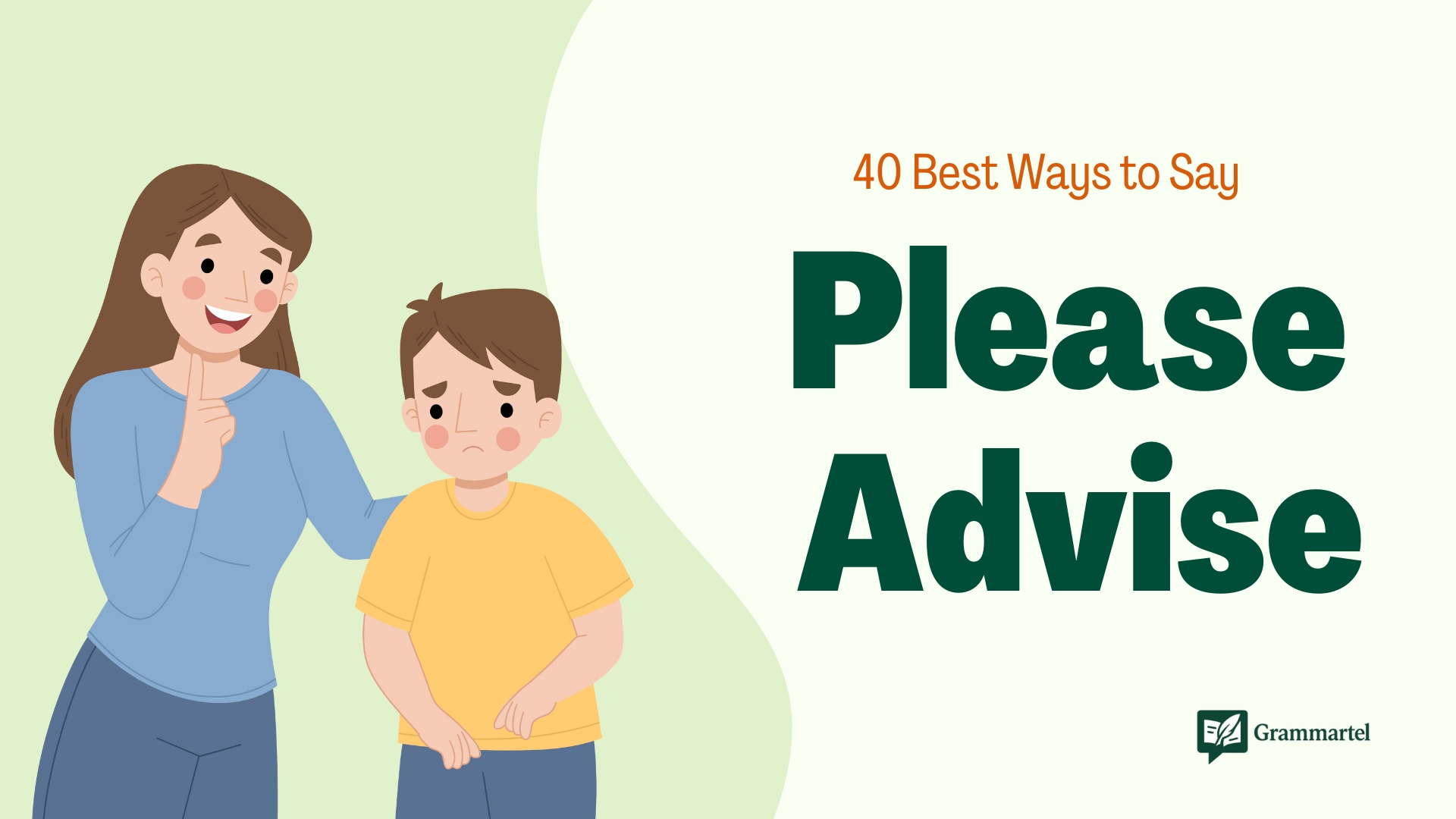When communicating in a professional or polite setting, it’s important to ask for advice in a way that feels respectful and clear. While “please advise” is a common phrase, it can sound repetitive or overly formal at times. Luckily, there are many alternative ways to ask for guidance. In this article, we’ll explore 40 different ways to say “please advise,” along with examples, to help you sound more polished and approachable in your conversations.
What Does “Please Advise” Mean?
“Please advise” is a polite way to ask for guidance or suggestions. It’s often used in formal emails or conversations when someone seeks advice on what to do next. It’s a way of saying, “Let me know what to do,” or “Please share your thoughts.” It helps keep the tone respectful and clear when seeking direction.
When to Use “Please Advise”
You can use “please advise” when you need help or advice, especially in professional settings. It’s great for emails, messages, or meetings where you’re asking someone for their opinion or recommendations. Just ensure the context is clear and that you’re addressing someone who has the knowledge to give a helpful response.
40 Best Ways to Say “Please Advise”
1. Kindly Guide Me
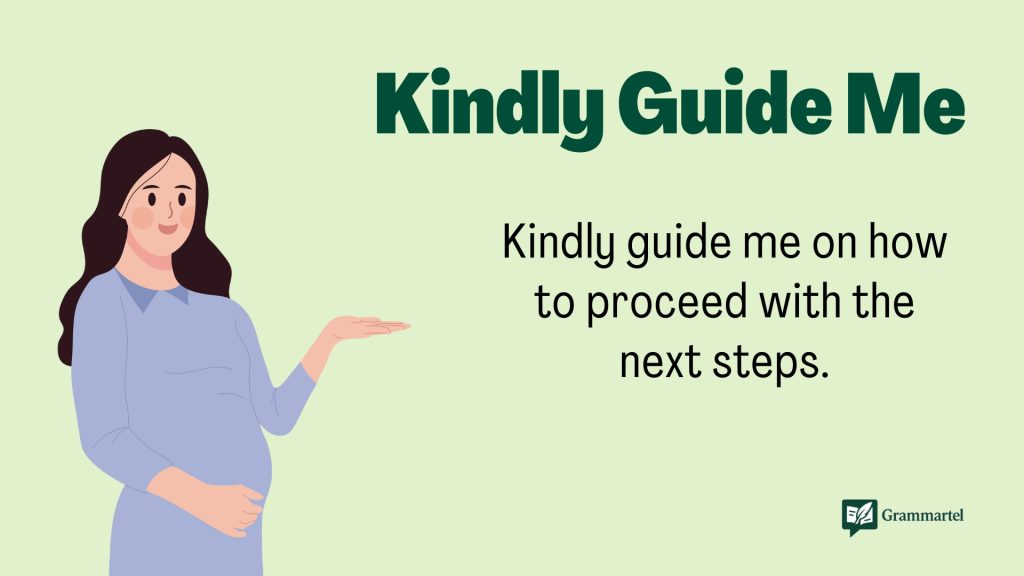
Meaning: Requesting direction or advice in a polite manner.
Explanation: This is a formal and respectful request, usually for help or clarification.
Example: Kindly guide me on how to proceed with the next steps.
Best Use: Formal email or letter when you are asking for guidance.
Worst Use: Informal conversations, as it might sound too stiff.
Tone: Polite, formal
2. Your Input is Appreciated
Meaning: Requesting someone’s opinion or feedback.
Explanation: A gentle way of asking for advice or feedback, indicating that their perspective is valued.
Example: Your input is appreciated on this matter.
Best Use: When you want someone’s opinion in a professional context.
Worst Use: In situations where you are urgently asking for help.
Tone: Appreciative, respectful
3. Could You Share Your Thoughts?
Meaning: Asking for someone’s advice or perspective.
Explanation: A simple way to request someone’s opinion or advice on a topic.
Example: Could you share your thoughts on this proposal?
Best Use: Informal settings or professional environments where you need someone’s perspective.
Worst Use: When a direct answer or action is required immediately.
Tone: Casual, polit
4. Would You Kindly Let Me Know?
Meaning: A polite request for someone to inform you or provide advice.
Explanation: This is a formal way of asking someone to keep you informed or advise you.
Example: Would you kindly let me know when the meeting is scheduled?
Best Use: Formal requests in emails or business letters.
Worst Use: In casual conversations, it may seem too formal.
Tone: Formal, courteous
5. Please Share Your Guidance
Meaning: Requesting specific advice or direction.
Explanation: This implies that you are asking for assistance or advice to guide you in a situation.
Example: Please share your guidance on how I can improve this report.
Best Use: When seeking help on an important issue or project.
Worst Use: In a quick, informal setting, as it may sound too stiff.
Tone: Formal, respectfu
6. May I Have Your Advice?
Meaning: Directly asking for someone’s opinion or counsel.
Explanation: A clear and direct request for advice.
Example: May I have your advice on how to address this issue?
Best Use: Formal conversations, especially in a business context.
Worst Use: Informal settings where a more casual phrase is appropriate.
Tone: Polite, formal
7. I Would Appreciate Your Feedback
Meaning: Asking for feedback or advice in a polite manner.
Explanation: A polite and professional way of asking for someone’s thoughts.
Example: I would appreciate your feedback on the proposal.
Best Use: Formal emails or meetings where you need input on something.
Worst Use: In casual conversations, as it might come off as too formal.
Tone: Respectful, formal
8. Could You Clarify for Me?
Meaning: Requesting clarification on a topic.
Explanation: A polite way of asking for someone’s guidance or advice to clear up confusion.
Example: Could you clarify for me what the next steps are?
Best Use: In professional settings when you need clarification on a complex issue.
Worst Use: In urgent situations where a quick answer is needed.
Tone: Polite, neutral
9. Please Let Me Know Your Thoughts
Meaning: Requesting someone’s feedback or opinion.
Explanation: A polite phrase often used in formal or professional contexts when asking for advice.
Example: Please let me know your thoughts on this proposal before our meeting.
Best Use: Professional emails or meetings.
Worst Use: Casual settings where it’s too formal.
Tone: Professional, polite
10. I Would Welcome Your Suggestions
Meaning: Seeking someone’s recommendations or advice.
Explanation: A polite way to invite feedback or ideas.
Example: I would welcome your suggestions on improving this process.
Best Use: Formal or semi-formal situations where input is needed.
Worst Use: Informal conversations where the request is not urgent.
Tone: Polite, welcoming
11. Can You Advise Me On This?
Meaning: Asking for advice on a specific matter.
Explanation: A straightforward way to request someone’s opinion or advice.
Example: Can you advise me on the best course of action for this project?
Best Use: In professional settings where advice is needed on a matter.
Worst Use: In casual or informal conversations, where it may sound too direct.
Tone: Polite, neutral
12. Please Offer Your Expertise
Meaning: Asking someone to share their knowledge or skills on a subject.
Explanation: This phrase asks for expert advice or guidance in a particular field.
Example: Please offer your expertise on this technical issue.
Best Use: When you need specialized advice or input.
Worst Use: When the situation does not require expert advice.
Tone: Respectful, professional
Take a Look at : 40 Best Ways to Say “Nice to Connect With You” (With Examples).
13. Could You Provide Some Insight?
Meaning: Requesting deeper understanding or advice.
Explanation: A phrase asking for a more thoughtful or detailed response.
Example: Could you provide some insight into this problem?
Best Use: In professional or academic contexts where deeper understanding is needed.
Worst Use: In informal settings, as it can sound overly formal.
Tone: Professional, thoughtful
14. Would You Be Able to Advise Me?
Meaning: A polite and formal way of asking for help or advice.
Explanation: This phrase expresses respect for someone’s time and knowledge.
Example: Would you be able to advise me on how to resolve this issue?
Best Use: When communicating in formal settings or with someone of higher authority.
Worst Use: In casual conversations where the request is less formal.
Tone: Respectful, formal
15. I Would Like Your Opinion
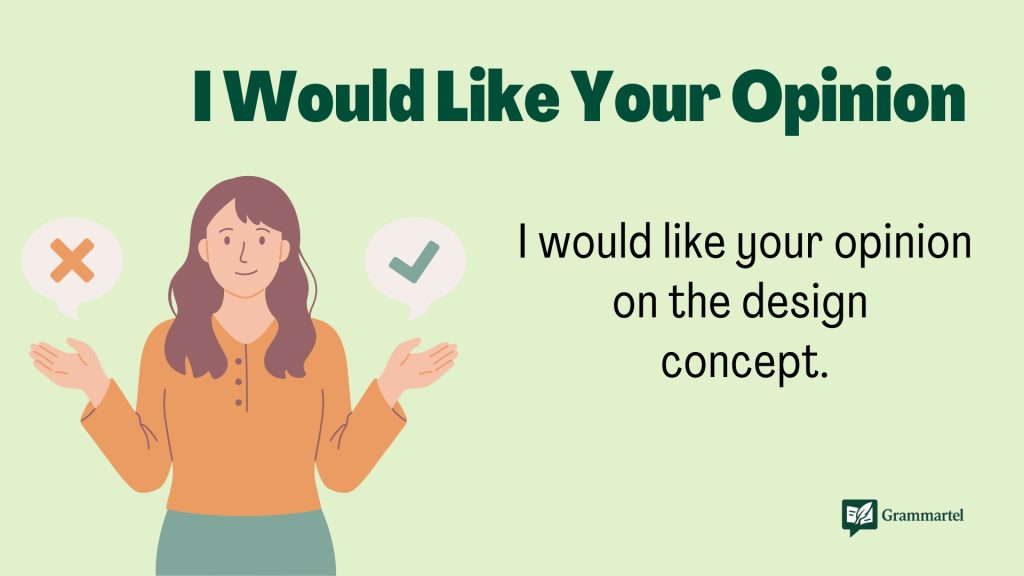
Meaning: Directly asking for someone’s personal thoughts or views.
Explanation: This is a straightforward request for someone’s perspective.
Example: I would like your opinion on the design concept.
Best Use: In a meeting or professional conversation when you need someone’s view.
Worst Use: In informal conversations where a lighter phrase may work better.
Tone: Direct, respectful
16. Please Advise on the Best Course of Action
Meaning: Seeking advice on the most appropriate steps to take.
Explanation: Asking for direction in a specific situation, usually in a professional context.
Example: Please advise on the best course of action for this project.
Best Use: Professional or business-related requests for strategic advice.
Worst Use: In casual situations where a more informal tone is needed.
Tone: Formal, professional
17. I’d Love to Hear Your Thoughts
Meaning: Inviting someone to share their ideas or feedback.
Explanation: A casual and friendly way of asking for advice.
Example: I’d love to hear your thoughts on my proposal.
Best Use: In informal conversations or in less formal business settings.
Worst Use: In high-stakes or formal business meetings.
Tone: Casual, friendly
18. Would You Mind Offering Some Guidance?
Meaning: A polite request for someone to share advice.
Explanation: This phrase softens the request, making it sound even more polite.
Example: Would you mind offering some guidance on this issue?
Best Use: In polite, formal settings where you want to sound respectful.
Worst Use: In urgent situations where time is of the essence.
Tone: Polite, respectful
19. Could You Please Advise?
Meaning: A direct yet polite way to ask for help.
Explanation: Similar to “Please advise,” but with a more formal tone.
Example: Could you please advise on the next steps in this process?
Best Use: Formal communications, especially when clarity is needed.
Worst Use: In casual conversations.
Tone: Formal, polite
20. I Would Appreciate Your Advice on This
Meaning: Requesting someone’s input or opinion.
Explanation: A courteous way to ask for advice while emphasizing its value.
Example: I would appreciate your advice on how to proceed with this case.
Best Use: In business emails, professional meetings, or formal situations.
Worst Use: Informal interactions where it may sound overly formal.
Tone: Respectful, formal
21. Can You Recommend a Solution?
Meaning: Asking for a specific recommendation.
Explanation: This phrase requests advice, usually with a focus on finding a solution.
Example: Can you recommend a solution to this issue?
Best Use: When seeking advice on problem-solving in professional settings.
Worst Use: In casual situations, where a simpler phrase could work better.
Tone: Direct, neutral
22. Please Advise on Your Thoughts
Meaning: Asking for someone’s opinion or perspective.
Explanation: A polite request for someone to share their views.
Example: Please advise on your thoughts regarding the new strategy.
Best Use: Formal or professional settings.
Worst Use: Informal conversations, where it can sound overly stiff.
Tone: Formal, professional
23. Would You Be Willing to Advise Me?
Meaning: Asking if someone is open to giving advice.
Explanation: This makes the request more flexible and respectful of the other person’s time.
Example: Would you be willing to advise me on this project?
Best Use: When addressing someone in a position of authority or expertise.
Worst Use: In urgent situations where you need quick advice.
Tone: Polite, respectful
24. I Would Like to Hear Your Recommendations
Meaning: A request for someone to suggest options or solutions.
Explanation: This emphasizes that you are looking for recommendations rather than just general advice.
Example: I would like to hear your recommendations for improving team performance.
Best Use: Professional contexts when seeking actionable suggestions.
Worst Use: Casual settings where you don’t need formal advice.
Tone: Professional, polite
25. Can You Provide Some Direction?
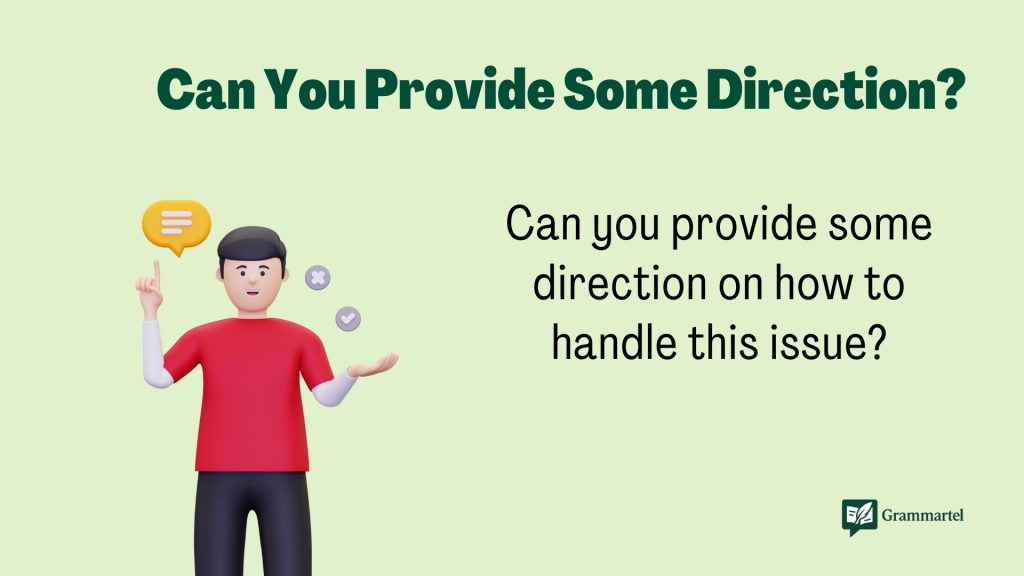
Meaning: Asking for guidance on what steps to take.
Explanation: A straightforward request for clarity or advice.
Example: Can you provide some direction on how to handle this issue?
Best Use: Professional conversations, especially when you’re unsure of the next steps.
Worst Use: In casual situations where a lighter request could work.
Tone: Direct, neutral
26. Please Inform Me of Your Recommendations
Meaning: Asking someone to share their suggestions.
Explanation: A formal way of requesting someone’s input.
Example: Please inform me of your recommendations for improving this strategy.
Best Use: Formal emails or business correspondence.
Worst Use: Informal settings where a more casual tone is needed.
Tone: Formal, respectful
27. Could You Kindly Guide Me on This?
Meaning: Politely requesting someone to help with advice or guidance.
Explanation: A formal and respectful way to ask for help or direction.
Example: Could you kindly guide me on the best way to approach this problem?
Best Use: Formal or business contexts when you’re seeking detailed assistance.
Worst Use: Casual conversations, where a less formal approach is needed.
Tone: Polite, formal
28. What Is Your Opinion on This?
Meaning: Directly asking for someone’s personal thoughts.
Explanation: A clear, straightforward request for someone’s view.
Example: What is your opinion on this new proposal?
Best Use: When seeking someone’s personal perspective.
Worst Use: In urgent situations where a more immediate response is needed.
Tone: Neutral, casual
29. Would You Be So Kind to Advise?
Meaning: A very polite way to ask for advice.
Explanation: This makes the request more formal and courteous.
Example: Would you be so kind to advise on the next steps?
Best Use: Formal settings, especially when you’re addressing someone with high authority.
Worst Use: Informal conversations where the tone can seem overly stiff.
Tone: Extremely polite, formal
30. Can You Offer Some Advice?
Meaning: Asking for someone to provide their opinion or assistance.
Explanation: A polite and simple way to ask for advice.
Example: Can you offer some advice on how to handle this task?
Best Use: Casual professional conversations.
Worst Use: In urgent situations where a more direct request is needed.
Tone: Casual, neutral
31. Would You Kindly Suggest an Approach?
Meaning: Requesting someone’s suggestion on how to proceed with something.
Explanation: A formal way of asking for advice or a recommended course of action.
Example: Would you kindly suggest an approach to tackle this project?
Best Use: Formal requests for professional advice.
Worst Use: Casual settings where a simple request is better.
Tone: Formal, polite
32. Could You Advise Me on the Best Way Forward?
Meaning: Asking for advice on the next best steps.
Explanation: This is a formal and respectful request for a recommended course of action.
Example: Could you advise me on the best way forward with this issue?
Best Use: In formal professional conversations where direction is needed.
Worst Use: In casual settings where the advice required is not critical.
Tone: Formal, respectful
33. What Would You Recommend?
Meaning: Requesting someone’s suggestion or solution to a problem.
Explanation: A straightforward way to ask for someone’s advice.
Example: What would you recommend for improving customer satisfaction?
Best Use: When you are looking for actionable advice or recommendations.
Worst Use: In casual situations, where a softer request is more appropriate.
Tone: Direct, respectful
34. Please Advise on Possible Solutions
Meaning: Seeking advice on how to solve a problem.
Explanation: This phrase specifically asks for solutions, often in a problem-solving context.
Example: Please advise on possible solutions to this issue.
Best Use: When dealing with issues that require professional problem-solving advice.
Worst Use: Casual discussions that do not require structured solutions.
Tone: Formal, professional
35. Would You Be Willing to Share Your Thoughts?
Meaning: A polite way of asking for someone’s opinion or advice.
Explanation: This shows respect and leaves room for the other person to choose to respond.
Example: Would you be willing to share your thoughts on this proposal?
Best Use: When addressing someone in a high-position or seeking thoughtful advice.
Worst Use: Casual settings where a more straightforward approach is needed.
Tone: Polite, respectful
36. Can You Provide Your Opinion?
Meaning: Requesting someone’s viewpoint on a topic.
Explanation: This is a simple and direct way of asking for someone’s thoughts.
Example: Can you provide your opinion on how we can improve efficiency?
Best Use: In professional settings when seeking someone’s perspective.
Worst Use: In informal settings where a casual tone is better.
Tone: Neutral, polite
Also Read : 40 Professional Ways to Say “I Was Referred to You By” (With Examples).
37. Please Suggest a Way Forward
Meaning: Asking for advice on how to move ahead.
Explanation: A request for practical guidance on the next steps.
Example: Please suggest a way forward with this project.
Best Use: In professional contexts where direction is needed.
Worst Use: Informal discussions, where a simpler request would suffice.
Tone: Professional, direct
38. Can You Provide Some Advice?
Meaning: Requesting someone’s help or guidance.
Explanation: A simple and polite way to ask for advice.
Example: Can you provide some advice on handling this situation?
Best Use: Casual work-related conversations where advice is needed.
Worst Use: In urgent scenarios that require immediate action.
Tone: Casual, polite
39. I Would Appreciate Your Guidance
Meaning: A respectful way of asking for advice or help.
Explanation: This emphasizes that you value their input.
Example: I would appreciate your guidance on how to proceed with the project.
Best Use: Professional or formal settings where advice is needed.
Worst Use: In situations where you are looking for a quick, actionable answer.
Tone: Respectful, formal
40. Please Share Your Recommendations
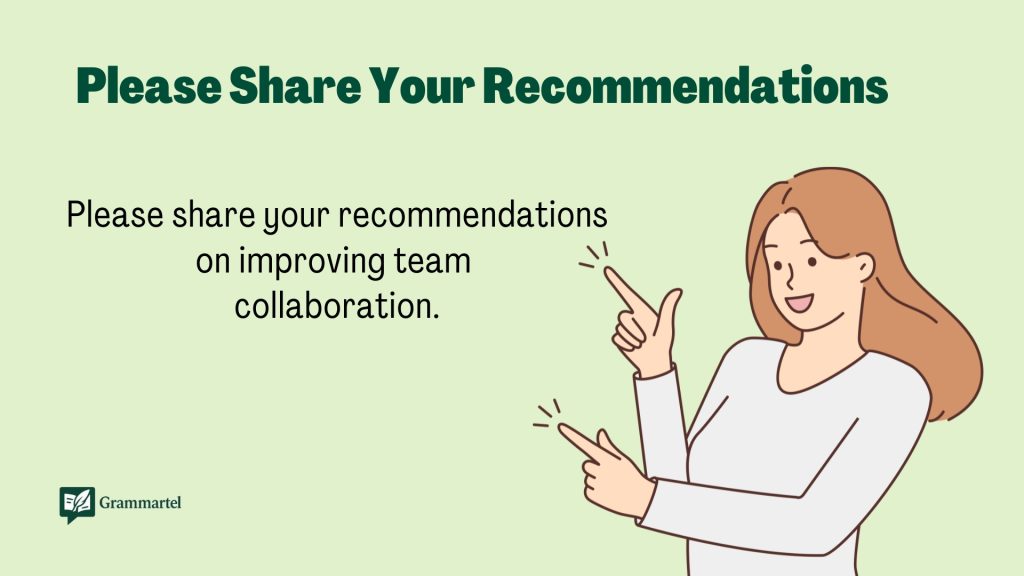
Meaning: Asking someone to offer suggestions or solutions.
Explanation: This phrase requests actionable recommendations on how to handle something.
Example: Please share your recommendations on improving team collaboration.
Best Use: Professional or formal conversations where actionable advice is needed.
Worst Use: Casual situations, where a simpler request would suffice.
Tone: Professional, polite
Conclusion
In conclusion, using various ways to say “please advise” can make your communication more natural and adaptable. By choosing the right phrase for the situation, you’ll come across as both respectful and clear, improving your overall message.
Discover more insightful reads by visiting Grammartel regularly.

